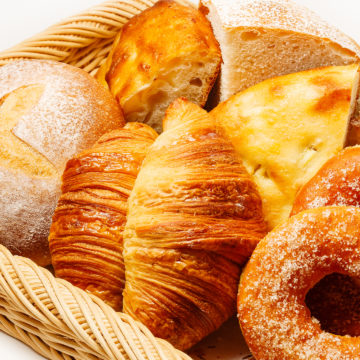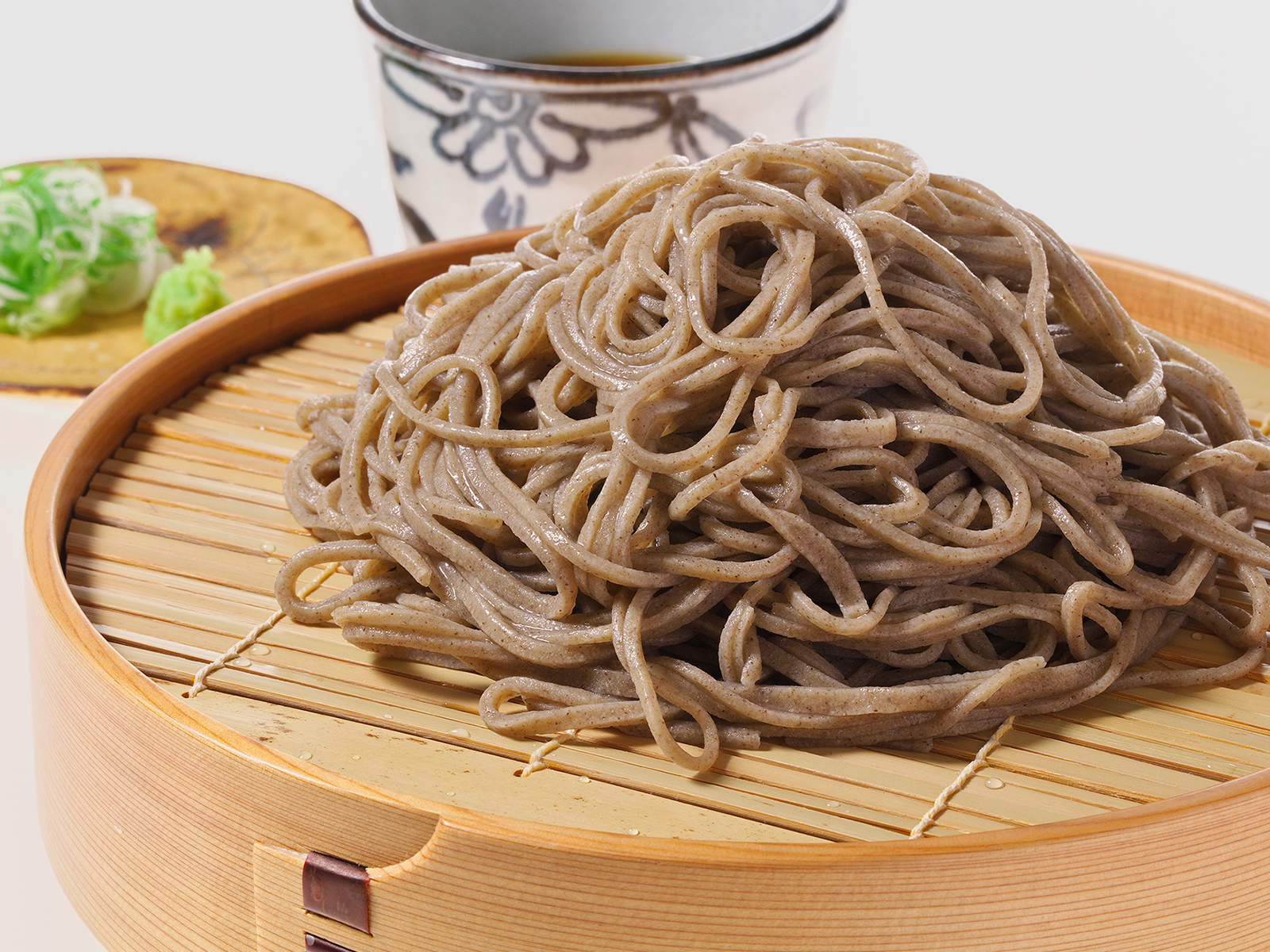
Bread

There are many self-professed “soba experts,” who fuss about where to eat soba or about the fragrance and consistency of handmade noodles. On top of that, if you go to a noodle shop that someone tells you about, you’ll find a multitude of choices from hard to soft, smooth noodles that it will seem like everyone has their own preference and no one agrees when it comes to soba. At Miho Museum’s Peach Valley Restaurant, we have been serving handmade soba since 2008 and it has gained popularity over the years.
So what are we waiting for? Let’s start with some shiny, freshly boiled noodles with visible grains. Try them, they are unbelievably smooth! When bitten into, they seem soft at first yet they are perfectly al dente. Then comes the flavor of the kombu, bonito, and mejika (bullet tuna) broth, which complements the soba beautifully.
Now let’s see how the noodles are made. Thankfully, our buckwheat farmers had removed any stone debris before sending us the grains prepared just right. The grains are then placed into the millstone and finely ground. When the brown hulls break, they are separated further by hand.
We then get the first round of flour, a yellowish powder laced with moisture that covers the millstone. The finest flour is taken and used for kneading the soba. The remaining flour is then ground and sieved a few more times; the crushed portion, mysteriously, gradually turns darker in color. A soft, moist grass-like fragrance of the soba drifts by. After the final round of milling, we have our soba flour, which is mixed with 20% Canadian flour and water. While adjusting its consistency and texture, the dough is stretched, kneaded and cut into the noodles we know and love.
That was a long process, but they only take a minute and half to boil! Then they are rinsed thoroughly with cold water and garnished with scallions, wasabi and broth to be served on the table.
In an encyclopedic manual on handmade soba, it is written, “It is very difficult to ensure soba flour that has good color, fragrance, and taste… If the dough of the soba flour does not spring back when kneading it by hand, then it’s useless for a soba shop to be in business… If aspiring to make the soba by hand, first you must be fastidious about the flour.”
Homemade buckwheat flour and handmade soba noodles -- soba connoisseurs, taste it to your heart’s content!